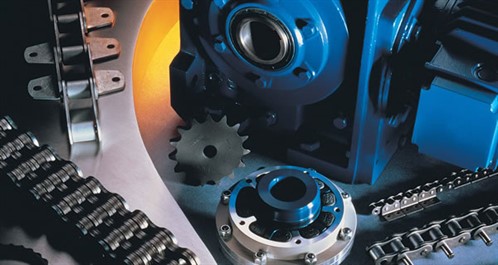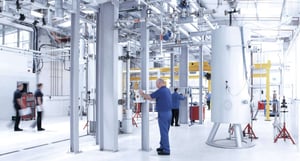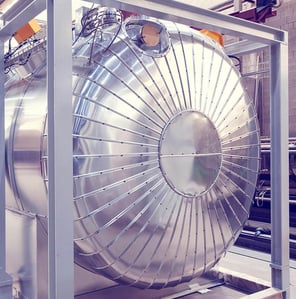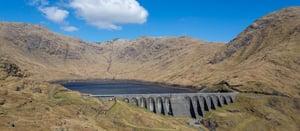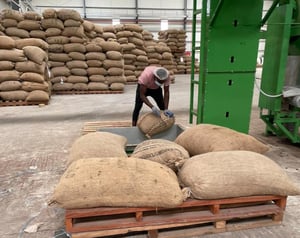Renold plc (LON:RNO) Chief Executive Officer Robert Purcell caught up with DirectorsTalk for an exclusive interview to discuss the business model, a strong set of results, an exceptional start for the TT division, the Davidson Chain performance and what investors can expect from the group for the rest of the year.
Q1: First off Robert, could you just remind investors of the business model and the industries that it serves?
A1: Renold is a precision mechanical engineering business that makes and supplies power transmission products. 80% of our business is industrial chain and the remaining 20% is our TT division that makes and supplies couplings and gears. We employ a little under 1900 people and turn over just less than £250 million supplying product into over 100 countries from around 10 manufacturing sites in the world.
Our products are used in an extremely broad base of final applications and market sectors for both MRO so maintenance and capital projects resulting in a huge spread of customers and industries served. There’s no customer or sector dependency. We make a premium high specification high performance product that deliver operational and environmental benefits.
The company, which is a leading industrial brand, has a history stretching back about 150 years providing premium products and engineered solutions that customers trust. Generally we make a relatively low cost but critical product which we sell into maintenance and OEM capital markets.
Most people listening will think that they rarely see our products but in reality, our products will touch their lives daily. For instance, our products are used across the food and beverage sector, in transport, energy, in logistics hubs and distribution centres, recycling equipment, automated car parks, automation in general in fact, all aspects of manufacturing, agriculture, aviation, and travel.
Our products are all around you and impact your lives every day actually.
Q2: Interim results for the half year ended 30th of September have now been published, a strong set of results but could you just take us through the highlights please?
A2: So, revenue for the half year is £125.3 million so that’s up 7.7%, 10.7% if you do that measure at constant exchange rates. Adjusted operating profit was up 56.3% to £15 million, so the first half of last year was £9.6 million, that’s a record profit number for us in a half year, even stronger than the second half of last year which itself was a record.
Return on sales increased by 370 basis points to 12%, net debt reduced to £28.3 million despite the acquisition of Davidson Chain in the half and several of the first half biased cash expenses in the period.
Our adjusted EPS growth was 40.7% so that was taking us up to 3.8 pence, compared to 2.7 pence in the first half of last year, and our pension deficit reduced by 15.3% to £52.7 million.
So, in the first half we did do the acquisition of Davidson Chain which I think is a good step forward for us, it’s another nice acquisition. We made good progress on capital investment, productivity improvements, cost reduction programmes and accelerating the step two strategic programme, increasing our capabilities.
There was an exceptional profit of £2.2 million the first half from disposing of a lease in a property that we no longer use. That is not included in the £15 million adjusted operating profit but it will generate £700,000 pounds a year of increased cash flow for the foreseeable future.
Q3: If we just look at the numbers in a little bit more detail, the Torque Transmission division it had an exceptional start to the year, what was it down to?
A3: It was indeed an exceptional first half of the year, it looks particularly good against the first half of last year. Revenue was £28.8 million so up almost 30% compared to H1 last year and adjusted operating profit was £4.6 million that’s up over 200% actually.
TT had a slow start to last year so the comparator was slightly soft, however if we compare the H1performance this year against the strong H2 performance last year, we still saw very good progress on sales operating profit and margins.
We’re benefiting from work that we’ve been doing over a number of years, combined with greater volumes, and increasing benefits from our business improvement activities. H1 saw a particular benefit from our contractors within Couplings for the Type 26 frigates which had a natural upswing in the half. However, we also did particularly well in the US where volumes have progressed nicely and the capital expenditure, we put into our US facility has paid dividends in terms of cost reduction and also output levels.
Q4: Now, on the 1st September 2023, the group acquired the trading assets of Davidson Chain, as you mentioned earlier. I know it’s only been a couple of months just over but could you give us an update on its performance and what it adds to the group?
A4: We’re very pleased with the Davidson chain acquisition whilst this is a relatively small acquisition. Like the other deals we have recently done it enhances earnings from day one whilst also delivering strategic benefits and cost synergies.
The business is located about 45 minutes’ drive from our main production site in Melbourne, Australia. Davidson makes and distributes primarily conveyor and adapted transmission chain products.
The conveyor chain bulks up our Australian market position which is quite strong in that part of the market and the adapted transmission chain is a marked step forward for us in this part of the chain market.
Davidson works in a manner similar to the service centres that we are rolling out in various parts of the world so this will give us a head start in that process in the Australian market.
The Davidson brothers have both moved across to Renold and we’re delighted that they will stay working for us along with their management team.
At the half year, having paid for the acquisition, net debt was still conservative at 7.7 times EBITDA so we have room to continue with further conservatively financed value-enhancing acquisitions.
Q5: Just looking forward, how do you see the market and what should investors expect from the group for the rest of the year?
A5: The macroeconomic environment is difficult and it’s very hard to tell quite what direction the global economy is going in. For added complexity there appears to be a big difference between individual geographic regions and also between market sectors.
This is maybe a good time to say that the UK is just 7% of our global revenue. However, the company has a very broad base of customers, market sectors, geographies, and applications, we supply into maintenance and capital projects, we don’t have a customer or sector dependency.
Therefore I believe that we are as well placed as we can be to deal with whatever may get thrown at us economically. Our strategy builds on the relatively low cost but critical nature of our products.
We have said today that the Board expects the company to produce numbers for this full financial year ahead of the previous market expectations and we expect the full financial year performance to be ahead of last year’s record numbers.

